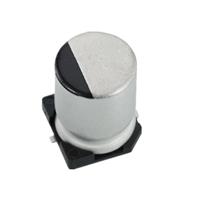ZS Series, Aluminum Electrolytic Capacitors
Results:
2
Manufacturer
Series
Height - Seated (Max)
Surface Mount Land Size
Size / Dimension
Ripple Current @ Low Frequency
ESR (Equivalent Series Resistance)
Ripple Current @ High Frequency
Capacitance
Polarization
Operating Temperature
Applications
Tolerance
Lead Spacing
Voltage - Rated
Mounting Type
Lifetime @ Temp.
Ratings
Package / Case
Impedance
Results remaining:2
Applied Filters:
ZS
About Aluminum Electrolytic Capacitors
Aluminum electrolytic capacitors are a type of polarized capacitor that use an aluminum electrode material with an oxide dielectric. These capacitors have a higher capacitance-voltage (CV) product per unit volume compared to other types of capacitors such as ceramic or film capacitors. They find use in a variety of applications, including power supplies, audio equipment, and industrial electronics. Aluminum electrolytic capacitors consist of two electrodes, an anode (+) made of pure aluminum foil and a cathode (-) made of a conductive liquid electrolyte with a separator in between. The aluminum oxide layer that forms on the anode acts as the dielectric, allowing the capacitor to store charge. The thinner the oxide layer, the greater the capacitance of the capacitor. One advantage of aluminum electrolytic capacitors is their ability to handle high levels of capacitance while maintaining a small form factor. Additionally, they have a low equivalent series resistance (ESR), which allows them to provide stable performance in high frequency circuits. However, there are also limitations to the use of aluminum electrolytic capacitors. They are sensitive to factors such as temperature, voltage, and current, which can cause them to degrade or even fail over time. Additionally, these capacitors are polarized and must be connected with the correct polarity to function properly. In summary, aluminum electrolytic capacitors are a useful type of capacitor that offers high capacitance-voltage product and stable performance in high frequency circuits. While they have advantages, they also have limitations that must be considered in their use.


